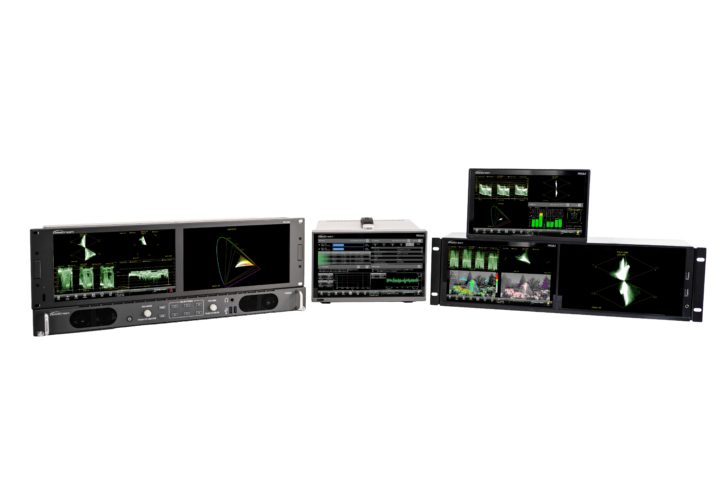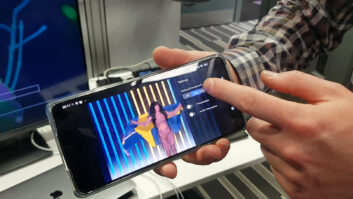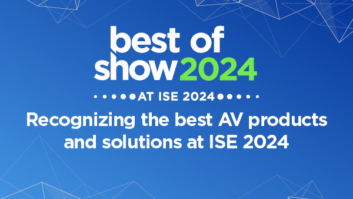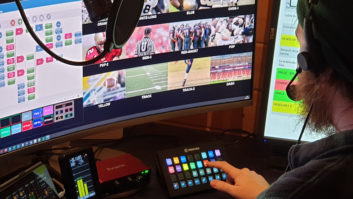Telestream is releasing six new models in its PRISM waveform monitoring product line, designed for the next generation of engineers.
The new models include a touchscreen interface, replacing the traditional buttons usually found on the front of the hardware.
Users will still find the familiar tools they would expect on the waveform monitors, which all operate in the same way they used to, but the company says the software approach on PRISM allows users (young and old) to personalise the instrument to match the way they like to use it and with the tools they like to use.
The move to touchscreen is something the company has been working on for some time, Ian Valentine, VP of product management at Telestream tells TVBEurope. “Very early on we started having conversations about building a new platform and how it was going to look like going forward. There were a number of decisions that we started to work towards, including that we would really like to get to a point where software became the main part of it. We can’t get there yet because of the signals we deal with, but in the future, we want to be able to offer PRISM software that runs on a server.”
Valentine adds that while the team at Telestream were originally developing PRISM, there were a number of goals they set themselves. One was to make it a software platform so that it’s easier to maintain and could be updated quicker. “Second was a discussion on the UI, because one of the things that we found was once you start to put a set of buttons that are hardwired on the side or along the bottom of your instrument, a customer can come along ask you to move them all around. So we decided to opt for a touchscreen. We also thought it would be nice if it had a bigger screen,” he explains.

“As part of our research we went to visit all customers, and the observation that every one of us made was that, whenever you walked into those meetings, there were two groups of people. There was the older broadcast engineer, and sitting next to them was the young network engineer. As the visits progressed we found that the young network engineers had more say in what was going on than the older guys. We actually asked people if they were OK with buttons or whether they preferred the touchscreen. What we found with the older generation was that they like buttons, whereas all the young engineers said touchscreen. What we realised as we went along was we had to make that touch experience useful for the environment it is going to be used in. I can tell you that our first efforts were less than stellar!”
Telestream’s conversations with older engineers confirmed that the need for buttons were more down to comfort than anything else. “The second point for them was that when you press a button there’s a response, there’s a mechanical feeling,” adds Valentine. “So we started trying to figure out what that all meant.
“By this time, we’d actually put the first version of PRISM out into the market. That’s when we started to discover things like predictive response, so if I press a button, or I touch the screen, I need to know what’s going to happen; and we were doing things that we assumed the touch response required. One of the things was a function called press and hold. If you put your finger on the screen and keep it there for a second, the pop up menu with all of the applications on the instrument would appear so you could choose which application you want it to go with. The problem with that was that for engineers who have time to press and hold the screen and then choose what they want to do it works great. But if you’re in a truck in an operational environment where you have to be quick, you can’t spend a second pressing the button, waiting for it to respond. All of that drove us to a completely different user experience where we basically revamped the whole UI, and it became all about user experience. We decided we’re going with a touchscreen, and we’re going to make this work.”
Valentine adds that a lot of the thinking behind this new UI is to ensure the technology is ready for those new engineers arriving in the industry. “We asked ourselves where do we take this to in the future? Where do the engineers in the future want to be with these kinds of instruments? There was the element of future proofing, there was the element of a shift to a software architecture that allowed us to do this. I think ultimately instruments like PRISM will run on a server somewhere. We’re not there yet, and we can’t get there yet, simply because you can’t look at 12G SDI signals very easily without an instrument. That’s really what it comes down to at the moment, the physical layer of the signals that we’re looking at have to be in a box.
One more positive of the new PRISM touchscreen? “In the Covid era you don’t have to wipe down the front of the instrument and it’s got 50 buttons,” says Valentine.







